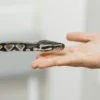For those planning to keep spiders or already keeping them, user Good_Luck_Bear has patiently compiled a series of common questions and answers. Below are the highlights to help fellow enthusiasts:
Q: What should I do when I first get my spider?
A: Let it acclimate (What does „acclimation“ mean? Do I need to stay still, or the spider?).
„Acclimation“ means maintaining proper substrate humidity and environmental temperature while avoiding disturbances. Allow the spider to adjust to its new environment. You can also use this time to cultivate inner calmness.
Q: My spider isn’t eating. What should I do?
A: Possible reasons:
- It’s still acclimating to its environment.
- It may be preparing to molt.
- It’s simply not hungry.
Q: My Chilean Rose Hair (spiderling, 3rd instar) and Golden Knee (spiderling, 2nd instar) were both acclimated for 5 days. I fed them mealworms on the 2nd day of the Golden Knee’s acclimation. The Golden Knee ate, but the Rose didn’t. Its abdomen looks small—is it about to molt?
A: Possibly. Try cutting the mealworms into smaller pieces and feeding at night. Give it a try tonight!
Q: Are spiders venomous?
A: Most spiders are venomous, but toxicity varies significantly between species.
Q: Can I handle my spider?
A: I don’t strictly oppose it, but I strongly discourage handling. Spiders are not toys—they’re for observation, not interaction. Do you handle your pet fish? Spiders have a 50% chance of biting when stressed. Even docile species like the Chilean Rose can act unpredictably. Remember: even rabbits bite when threatened.
Q: How do I care for a spider?
A: Essentials: substrate (coconut fiber), water dish (not needed for spiderlings), hides, proper temperature, and humidity (maintain damp substrate).
Q: How do I feed my spider?
A:
- Spiderlings: Offer cut mealworms, small Dubia roaches, or cricket legs.
- Adults: Feed large mealworms, crickets, or adult Dubia roaches.
Always feed at night (spiders are nocturnal). Remove uneaten prey by morning.
Prey preparation: Crush the heads of mealworms/superworms to prevent burrowing. Trim Dubia roach legs to stop them from disturbing molting spiders.
Q: When should I provide a water dish?
A: Introduce one once the spider reaches the juvenile stage.
Q: How often should I feed my spider (adults vs. spiderlings)?
A:
- Spiderlings: Twice weekly, but monitor abdomen size. Stop feeding if the abdomen exceeds twice the carapace width until after molting.
- Adults: Once weekly.
Q: Signs of premolt?
A: Refusal to eat (duration varies by species—from days to months), dull coloration, and a darkened, hairless abdomen. Watch for these changes.
Q: What to do before molting?
A: Increase substrate moisture and avoid disturbing the spider.
Q: How to distinguish males from females?
A: Some species show color dimorphism. Generally, females are larger and longer-lived. Males mature faster but have shorter lifespans.
Q: How long should mealworm pieces be for feeding?
A: Match the length to the spider’s carapace size.
Q: I’m a new keeper. Does my juvenile Chilean Rose need a water dish? Should I add hides? It’s clinging to the enclosure walls—is this normal? Do I need a secure lid? When can I handle it?
A:
- Yes, embed a shallow water dish (with or without a sponge).
- Provide hides.
- Wall-clinging is normal if it’s eating.
- Always secure the lid—spiders can escape.
- Handling is not recommended.
Q: Can I let my spider roam freely on day two of ownership?
A: You can, but be cautious—bites are possible.
Q: Aren’t Chilean Rose spiders supposed to be docile?
A: Temperament varies by individual.
Q: Should beginners start with adults or spiderlings?
A: Spiderlings are rewarding if you’re patient.
Q: Do I need more than substrate for a Chilean Rose setup?
A: Coconut fiber and a small water dish are sufficient.
Q: At what temperature should I use a heat mat?
A: Use heating if temperatures consistently drop below 20°C (68°F).









Add comment